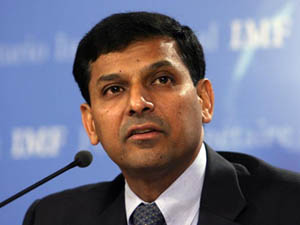Mumbai, Dec 1: RBI Governor Raghuram Rajan today kept the key policy rate unchanged but affirmed the central bank's commitment to ease it as and when room is available, saying inflation is likely to perform better than expected.
 Accordingly, the repo rate at which the Reserve Bank lends to the system will continue at 6.75 per cent. The cash reserve ratio (CRR) or the amount of deposits banks park with RBI has also been unchanged at 4 per cent. The status quo was widely expected.
Accordingly, the repo rate at which the Reserve Bank lends to the system will continue at 6.75 per cent. The cash reserve ratio (CRR) or the amount of deposits banks park with RBI has also been unchanged at 4 per cent. The status quo was widely expected.
RBI, which is set to achieve its target of getting inflation down at 6 per cent by January and is aiming to reduce the number further to 5 per cent by March 2017, will monitor developments on theCOMMODITY PRICES , including food and oil and external developments in its future policy formulations, Rajan said.
In his fifth bi-monthly policy review of this fiscal, he said: "Inflation is expected to broadly follow the path set out in the September review with risks slightly on the downside.
"The RBI will use the space for further accommodation, when available, while keeping the economy anchored to the projected disinflation path that should take inflation down to 5 per cent by March 2017."
Though the RBI Governor noted that second-quarter GDP numbers indicate early signs of recovery, he chose to stick to the earlier projection of 7.4 per cent for the fiscal with a marginal downward bias.
Rajan also expressed anguish at the banks' reluctance to pass on the benefits of the earlier rate cut actions to the borrowers, saying the median decrease in the base rates over the course of the year has only been 0.60 per cent as against the RBI’s 1.25 per cent cut in the repo rate since January.
"Less than half of the cumulative policy repo rate reduction of 1.25 per cent has been transmitted by banks" and the median base lending rate has declined only by 0.60 per cent, Rajan said.
He also announced that RBI will shortly finalise the methodology for base rate calculation as per the marginal cost of funds which will be mandatory for banks.
Additionally, Rajan said the government is also mulling to link the small savings rate - a factor deterring rate cuts by banks - toMARKET rates.
With the seventh pay panel’s recommendations of a 23.55 per cent hike in salaries leading to concerns on the impact on inflation in future, RBI said the government will have to do "appropriate budgetary tightening" to reduce the impact and it will be watching the space.
"...its direct effect on aggregate demand is likely to be offset by appropriate budgetary tightening as the government stays on the fiscal consolidation path," Rajan said.
The recommendations will cost the exchequer 0.65 per cent of GDP or Rs 1.02 trillion (Rs 1.02 lakh crore) per annum is also another factor which the central bank will be keeping an eye on.
The Governor expressed hope that the clean-up of bank balance-sheets by way of containing bad loans will make more funds available for productive sectors.
Rajan has cut the key rates four times by a cumulative 1.25 per cent since January, including the surprise 0.50 per cent cut at the last policy review on September 29.
He was widely expected to hold rates at this review due to emerging worries on inflation and impact of a possible rate hike by the US Fed.
"Unease in investor sentiment is likely to increase ahead of the imminent divergence in advanced economy monetary policy stances," Rajan said referring to the US Fed meet later this month.
The US Fed is widely expected to formally shift its stance to rate tightening at its December 16 meeting on positive data on employment coming in. This will be its first hike in rates by the Fed, which has kept it's key rates under 0.25 per cent since the 2008 financial crisis.
The GDP data released yesterday, pointing to a healthy 7.4 per cent uptick in the second quarter, backed by a strong manufacturing growth of 9.3 per cent only reduced hopes of a rate cut by the central bank.
After remaining low for many months, the headline consumer price inflation moved up to 5 per cent in October due to surge in food prices and is expected to rise further as the base effect wears-off.





Comments
Add new comment